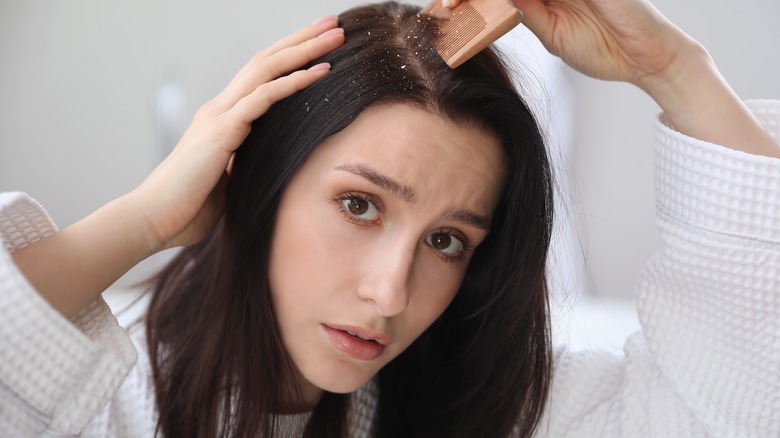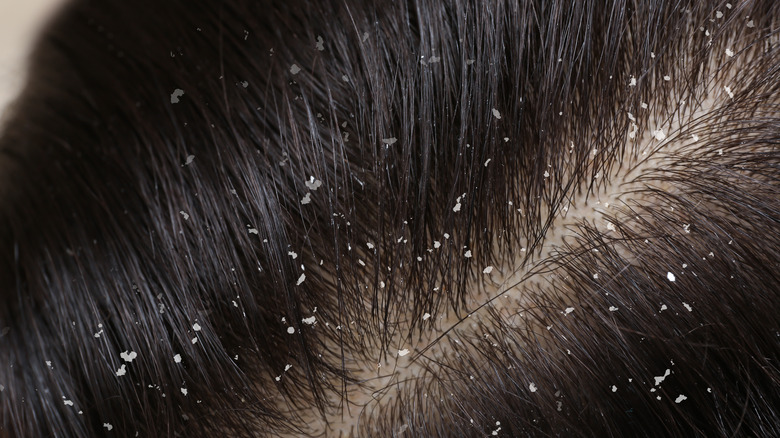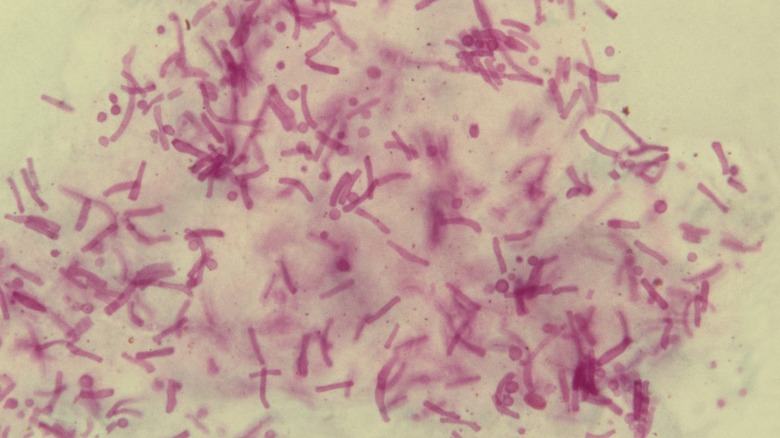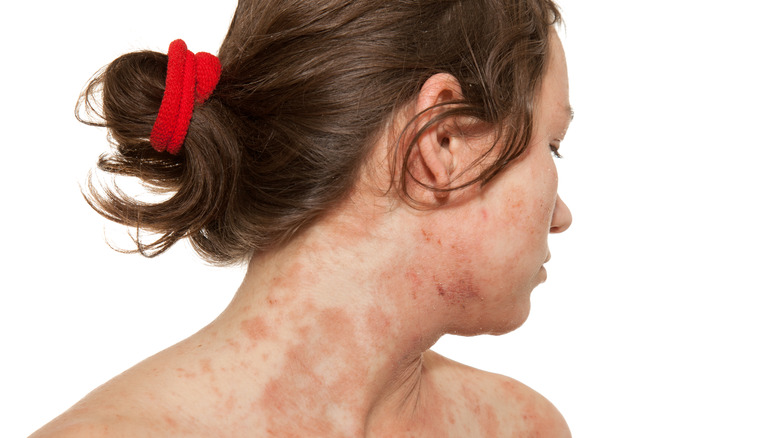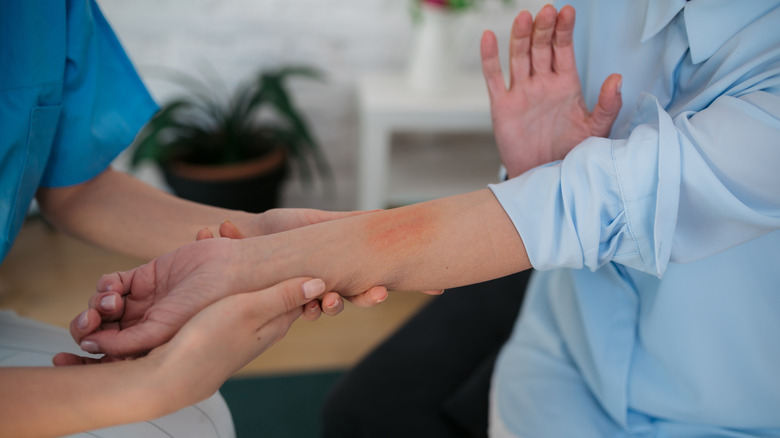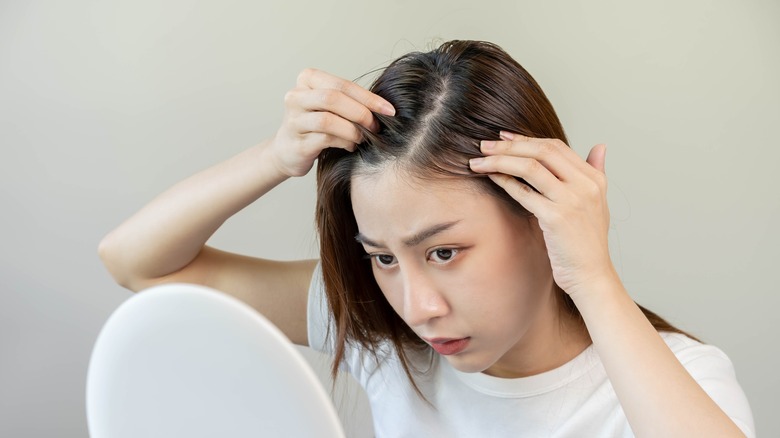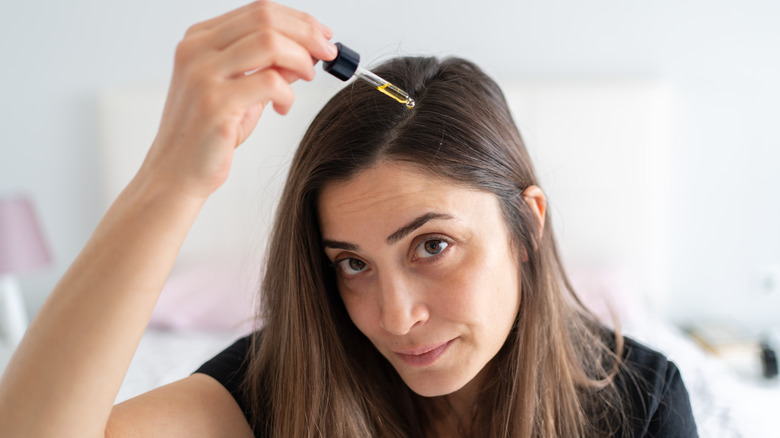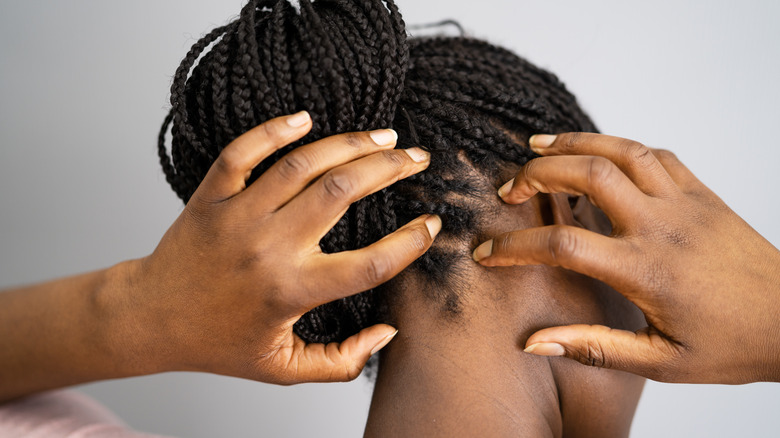Let's Talk Dandruff: Why You Get It, How You Can Treat It, & Everything In Between
According to some research published in the Journal of Investigative Dermatology, it's been estimated that over 50 million Americans suffer from dandruff. In fact, around half the population worldwide will experience it at some point in their lives. It can be embarrassing and lower one's self-esteem when those white flakes get spotted on your shoulder, but what can you do about it? It seems to affect people regardless of race or background and peaks at different stages throughout our lives.
While leading anti-dandruff brands make tens of millions of dollars every year trying to solve this problem, according to Statista, sometimes Head and Shoulders just won't do it. Despite so many sufferers worldwide, it remains an ongoing issue for many people with a variety of clinical presentations.
Scientific investigation indicates that dandruff can be related to everything from our immune system to bacteria, fungi, and hormones. This can make it hard to seek out the right treatment, but by understanding the mechanisms beyond the condition, we can get one step closer to fighting dandruff. So, let's go into detail about what dandruff really is, its underlying causes, and the pragmatic steps you can take to treat it.
What is dandruff?
The scientific name for dandruff is pityriasis capitis, and most people are familiar with it as those white scalp flakes, sometimes accompanied by itching and mild inflammation. It can happen to those with both dry and oily skin types and seems to target individuals indiscriminately for the most part, though people with compromised immune systems may be more susceptible.
While there are various factors involved in why dandruff occurs, the main mechanism for the condition is the overabundance of a certain type of yeast called Malassezia. Malassezia are found on everyone's skin, but when, for whatever reason, they colonize the scalp (i.e., they grow more abundant than other skin microbes), this triggers an inflammatory response. Research published in the Journal of Cosmetic Dermatology explains that this inflammation disrupts the skin's natural protective barrier and upsets the function of skin cells, namely corneocytes.
Per the book Close Encounters of the Microbial Kind, corneocytes are dead cells filled with keratin, a protein that makes up the hair, skin, and nails. Our skin is constantly producing more keratin, which gets pushed to the skin's surface and shed into the environment. While this also happens for those with a healthy scalp, in dandruff sufferers, the process gets sped up due to the inflammatory disruption. The shedding rate of corneocytes increases and clumps together with other dead cells, making dandruff more visible.
The main causes of dandruff
The question many will no doubt ask, given the above, is why the behavior of the Malassezia yeast changes. After all, this seems to be the trigger point for dandruff. Unfortunately, the answer isn't so simple because there are several different factors that can trigger the process, ranging from environmental factors like hair products to those intrinsic to our body, such as changes in sebum levels (our skin's natural oil), immune system issues, and genetics.
The main point of interest, perhaps, is that Malassezia fungi require a certain type of climate to proliferate, and the factors above, inside and out, help with this. They need fats to feed on, which they get from the natural oils on our scalp — sebum. And although our body produces this oil to help keep our skin lubricated, high stress, hormonal imbalances, and external irritants that increase sebum production can create an environment that Malassezia prefers.
Interestingly, some research published in the Journal of Experimental Dermatology proposes that the invasion of Malassezia might actually come after damage to the skin's barrier. This would mean that a person has to have some underlying skin barrier defect for them to colonize, such as an immune system, hormonal, or environmentally inflicted issue. Regardless of which is true, it makes finding an anti-dandruff solution complex. To understand the problem fully, you may have to look a bit farther than the white flakes on your shoulder.
Environmental factors in dandruff
As we've touched on, there are various irritants that can exacerbate dandruff formation. The main criteria for these factors are that they likely increase sebum levels or damage the skin's barrier in some way. For instance, dermatologist Dr. Dray explains that people who live in areas with hard water — that is, water with high levels of minerals like calcium and magnesium — may find that they experience more irritation and scalp build-up, which can be conducive to dandruff.
Similarly, other factors that may be worth investigating are styling or hair products that leave a residue or can damage the skin's barrier, such as heat styling or products with harsh chemicals. You also might want to look at the air quality index in your area. If it's relatively high, you may need to take steps to protect your scalp from irritation, such as applying hair masks or oil after exposure.
According to the Journal of Experimental Dermatology, research has shown that Malassezia appear to be significantly more abundant in areas with a high air pollution score. Dermatologists suggest that even healthy individuals can be more susceptible to dandruff in conditions where pollutants in the environment can negatively affect their skin's natural balance.
Medical conditions behind dandruff
Outside of external factors, dandruff can be a side effect of biological changes or difficulties. This plays into the theory we discussed above where inflammation is a trigger in fungi growth, and there's evidence that this could be the case because dandruff is often a feature of many inflammatory skin conditions. For instance, according to the PLOS Pathogens Journal, the presence of Malassezia is also seen in eczema, folliculitis (inflamed hair follicles), and seborrheic dermatitis (a type of dandruff that affects more than the scalp) sufferers as well, suggesting that a compromised immune system could also be a factor.
While dandruff doesn't usually have any serious or life-threatening medical implications, it can mask dermatological issues that should be addressed. One example of a dandruff-causing condition that's better targeted early on is tinea capitis. This condition, also known as scalp ringworm (a fungus different from those with dandruff), often begins as flaking, itching, and redness but can lead to hair loss.
As explained by DermNet, tinea capitis is an infectious condition that can spread from person to person, sometimes even without any obvious symptoms. While it's less prevalent than dandruff, it can mimic many aspects of it, such as the presence of fungi, inflammation, and irritation.
Dietary issues and dandruff
The skin's microbiome describes the unique bacterial climate of the skin. For the most part, these microorganisms don't harm us. In fact, they're part of the healthy functions of our body. However, disturbance to this environment can leave us open to diseases and skin dysfunctions. But what's interesting is that recent research has drawn a link between the microbiome of the skin and the gut, per the Journal of Microorganisms.
The research highlights, for instance, that people with skin conditions like dermatitis, acne, and dandruff will often also exhibit disruption in their gut biome. Due to this link, diet probably plays a greater role in skin issues like dandruff than we first thought. Moreover, the research even cites studies where probiotics appeared to ease the effects of dandruff severity.
As such, many doctors may advise people with dandruff to make dietary changes, such as eating more fruit and vegetables and cutting down on sugar to restore balance to their gut biome. For instance, a 2019 study published in the International Journal of Research Studies in Microbiology and Biotechnology found that 50% of dandruff sufferers studied had indicators of a high-sugar diet, whereas only 20% without these indicators had dandruff. They established this through the absence of urine ketones, a chemical that's present if someone has a low-glucose diet. That potentially means that people could be more likely to have dandruff if their diets include high amounts of sugar.
Signs it's not dandruff
One of the things to look out for when you're trying to treat dandruff is the possibility of an underlying dermatological condition. These conditions can appear very similar to dandruff but may not be as simple to treat. One prevalent example of this is psoriasis, which is an autoimmune skin condition characterized by excess skin shedding. As this condition can also affect the scalp, it's not uncommon for people to confuse the two.
However, as the National Psoriasis Foundation highlights, psoriasis sufferers are more likely to also exhibit symptoms on other parts of the body. They may find that itching and flaking extend from the scalp, down the neck, and around the ears. The itching in these cases is often more severe than in regular dandruff.
But despite these differences, the treatment for both conditions is relatively similar. Treatments that dissolve excess skin and those that can aid in antibacterial and antifungal growth will be helpful in both cases. Still, in the case of severe psoriasis, these treatments may not work, requiring specialist medication. In addition, since psoriasis is a chronic disease, you may also see recurring "dandruff" flare-ups, which could be a sign you need to visit your dermatologist for further inspection.
Are some people more prone to dandruff?
While anyone can get dandruff, there's some evidence that certain people are more susceptible than others. Firstly, research published in 2021 in the Journal of Medical Mycology suggests that people living in rural areas are more likely to suffer from severe dandruff than those in the city. While the research explains this may tie into certain socioeconomic factors, we can imagine that those who live a rural lifestyle might also be more at risk of sun damage, which can increase sebum levels. But conversely, rural dwellers may be less exposed to pollution than city dwellers, making it harder to draw lines on whether location is truly a factor in dandruff or not.
For instance, it's highlighted in other medical studies that areas such as Sub-Saharan Africa and North America have a higher prevalence of dandruff cases than central and Eastern Europe (per the National Eczema Association). However, the study suggested a number of reasons, including skin type and climate, for why that might actually be. Additionally, a study published in the Journal of Gynecology and Women's Health argued that blood type might be a possible actor in dandruff. The research found that women with B+ and O+ blood were more likely to get dandruff, with B- blood groups being the least likely to get the condition.
How can you get rid of dandruff as quickly as possible?
Dandruff can be an ongoing experience that occurs on and off over the course of a lifetime. Therefore, if you're looking for a quick fix for a special event or occasion, just keep in mind that your dandruff might come back over time. For this reason, your best option is to incorporate a long-term plan for dandruff management.
In the meantime, dermatologist Dr. Sam Ellis recommends that those with dandruff should wash their hair more frequently. You also might consider your washing technique or allocate extra time to ensure that the product is getting deeper into the scalp. This might be with an over-the-counter product or drugstore shampoo specifically for dandruff, but ideally, what you want is a product that contains antibacterial and antifungal effects. You can also look for those that have keratolytic properties.
Keratolytic products are those specifically designed to dissolve skin flakes. They weaken the bonds of dead cells, helping them to be washed away. For instance, some examples include products that contain some combination of sulfur and salicylic acid or coal tar extract. However, if these don't work, a more specialized product such as azoles, hydroxypyridones (both antifungals), or corticosteroids (an anti-inflammatory) might be necessary. In that case, your dermatologist should be able to recommend the best treatment for your scalp.
Can there be complications with dandruff?
The main issue with dandruff is that it can be hard to tell whether it's a condition that needs medical treatment or not. Since many dermatological conditions — such as psoriasis, atopic dermatitis, tinea capitis, and rosacea — can mirror the symptoms of dandruff, it's important to consider whether you have any other symptoms that might indicate a need for further examination. For instance, seborrheic dermatitis is essentially the same condition as dandruff, but the key difference is where and how extensively it appears.
In a review of the condition published in the Journal of Investigative Dermatology, researchers highlighted that in seborrheic dermatitis, you might get flaking and itching on the face, chest, and neck, as well as the scalp. You may also experience inflammation and redness, which can be tell-tale signs that the condition is more serious.
The main concern would be that a person with dandruff might not consider these as factors of a potential underlying condition, possibly leading to the wrong treatment or allowing the condition to go undiagnosed. As the research above mentions, one less common condition that could be mistaken for dandruff is lupus, a long-term and serious autoimmune disease. Of course, this doesn't mean that you need to rush to your doctor at the first sign of flaking, but you should look out for other symptoms to avoid complications.
Long-term dandruff treatment
When thinking about long-term dandruff management, your first priority will be to reduce scalp buildup. Between your natural oils and all the products you might regularly use on your hair, it can create a climate on the scalp that's very comfortable for bacteria to colonize. As such, we want to ensure that we maintain scalp hygiene in the same way we would any other part of the body.
Dermatologist Dr. Dray advises washing your hair regularly and thoroughly, even going in with an exfoliating brush if necessary. It's a common misconception that overwashing damages hair, but a wash every two to three days isn't overkill. Rather, it protects against dandruff, and you can always follow up with a conditioner to manage dryness.
If you have skin sensitivity issues or conditions like psoriasis, however, a chemical scalp exfoliant like salicylic acid might be more appropriate. For those worried about the side effects of such products, there's some research from Current Topics in Medicinal Chemistry that natural ingredients such as tea tree oil and aloe vera can be helpful in managing dandruff. You can use these two to three times a week, but always be careful to do a test patch on your skin before you start to avoid irritation.
Things to avoid if you have dandruff
One of the difficulties in treating dandruff is achieving the right balance between fighting bacterial climates and maintaining a healthy skin barrier. The scalp, like the face, is protected by several skin layers that help keep harmful agents at bay but also use oil glands to hydrate the scalp, which can sometimes become clogged and inadvertently invite bacteria.
As research from the International Journal of Cosmetic Science highlights, toxins and microorganisms are a problem, but we also have to protect the integrity of the skin's barrier function to prevent water loss, which can be detrimental to its protective capabilities. Thus, the main focus for dandruff treatment can include antifungal and bacterial agents, but it's also necessary to incorporate treatments that replenish the skin's barrier.
The research warns that shampooing with abrasive products should be avoided — especially those that lack any moisturizing agents. Research from the Journal of Dermatologic Therapy suggests that products that alter our skin's natural pH should also be scrutinized, and we should aim for those in the neutral to acidic pH range instead. For instance, you should steer clear of hand soaps and harsh surfactants (chemicals used for cleaning) like sulfates in the absence of a strong moisturizing agent.
